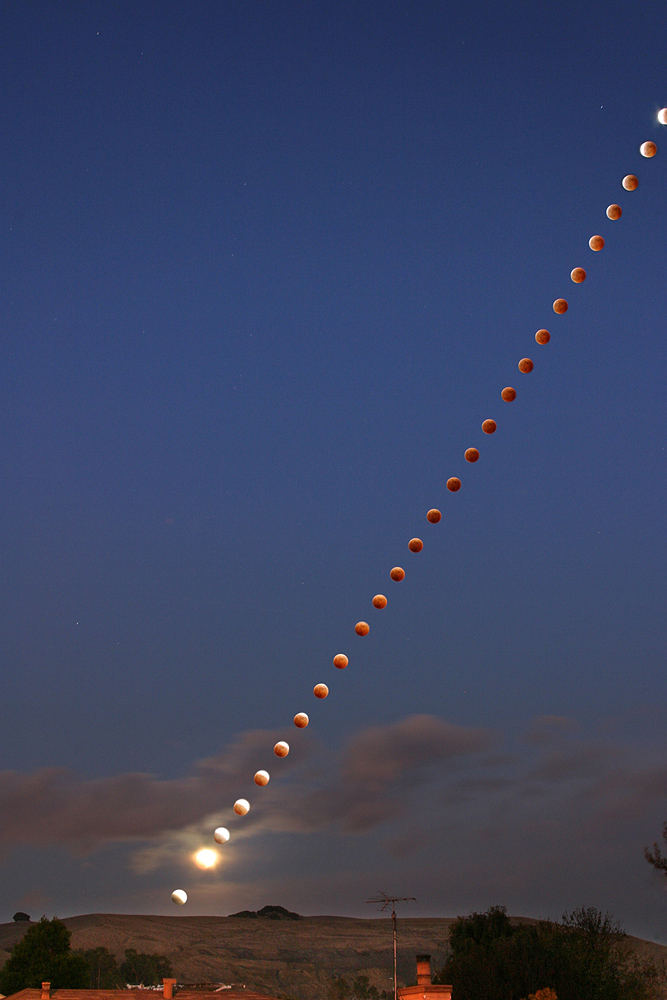|
Sony α STF 135mm F2.8 T4.5
Originally produced by Minolta, and currently produced by Sony, the STF 135mm f/2.8 [T4.5] is a photographic lens compatible with cameras using the Minolta AF and Sony α Minolta A-mount, A-mount. STF stands for ''Smooth Trans Focus'', in reference to its special optical system, which is intended to smooth the transition between the plane of focus and out-of-focus areas in the image. This is accomplished by the use of an apodization filter that provides the high-quality bokeh effect. The lens is not a soft-focus lens. The STF lens is a manual focus-only lens. This lens is the only genuinely Minolta/Sony A-mount lens produced without autofocus capability. It is also the sole such lens having an aperture ring. Apodization is a process in spatial signal processing which can enhance resolution by reducing the secondary maxima in the diffraction pattern of the lens' aperture. The STF lens features an optical apodization filter in form of a neutral-gray tinted concave lens element n ... [...More Info...] [...Related Items...] OR: [Wikipedia] [Google] [Baidu] |
Minolta
was a Japanese manufacturer of cameras, lenses, camera accessories, photocopiers, fax machines, and laser printers. Minolta Co., Ltd., which is also known simply as Minolta, was founded in Osaka, Japan, in 1928 as . It made the first integrated autofocus 35 mm SLR camera system. In 1931, the company adopted its final name, an acronym for "Mechanism, Instruments, Optics, and Lenses by Tashima". In 2003, Minolta merged with Konica to form Konica Minolta. On 19 January 2006, Konica Minolta announced that it was leaving the camera and photo business, and that it would sell a portion of its Single-lens reflex camera, SLR camera business to Sony as part of its move to pull completely out of the business of selling cameras and photographic film. History Milestones *1928: establishes Nichi-Doku Shashinki Shōten ("Japanese-German photo company," the precursor of Minolta Co., Ltd.). *1929: Marketed the company's first camera, the "Nifcarette" (ニフカレッテ). *1937: The Mi ... [...More Info...] [...Related Items...] OR: [Wikipedia] [Google] [Baidu] |
Exposure Value
In photography, exposure value (EV) is a number that represents a combination of a camera's shutter speed and f-number, such that all combinations that yield the same exposure (photography), exposure have the same EV (for any fixed scene luminance). Exposure value is also used to indicate an interval on the photographic exposure scale, with a difference of 1 EV corresponding to a standard power-of-2 exposure step, commonly referred to as a stop. The EV concept was developed by the German shutter manufacturer Friedrich Deckel in the 1950s (#CITEREFGebele1958, Gebele 1958; #CITEREFRay2000, Ray 2000, 318). Its intent was to simplify choosing among equivalent camera exposure settings by replacing combinations of shutter speed and f-number (e.g., 1/125 s at ) with a single number (e.g., 15). On some lenses with Shutter (photography)#Diaphragm shutter, leaf shutters, the process was further simplified by allowing the shutter and aperture controls to be linked such that, when one w ... [...More Info...] [...Related Items...] OR: [Wikipedia] [Google] [Baidu] |
List Of Minolta A-mount Lenses
Minolta and its successor Konica Minolta released the following lenses for Minolta A-mount cameras between 1985 and 2006. History While most auto-focus lens designs were new developments, some optical constructions were derived from Minolta SR-mount lenses. In the United States, the Maxxum system launched in 1985 with twelve lenses: * 24mm * 28mm * 50mm * 50mm * 50mm Macro * 135mm * 300mm APO * 28–85mm * 28–135mm * 35–70mm * 35–105mm * 70–210mm When the second camera, the 9000, was launched later in 1985, two more lenses were added: the 75–300 mm and 600 mm APO. By 1986, Minolta had expanded the lineup by releasing 16 mm fisheye, 20 mm , 28 mm , 100 mm Macro, 200 mm , and 100–200 mm lenses. Restyled ("i" series) Initially, the lenses were equipped with narrow ribbed manual focus rings in hard plastic near the front; most lenses had a diagonally-ri ... [...More Info...] [...Related Items...] OR: [Wikipedia] [Google] [Baidu] |
Multiple Exposure
In photography and cinematography, a multiple exposure is the superimposition of two or more exposures to create a single image, and double exposure has a corresponding meaning in respect of two images. The exposure values may or may not be identical to each other. Overview Ordinarily, cameras have a sensitivity to light that is a function of time. For example, a one-second exposure is an exposure in which the camera image is equally responsive to light over the exposure time of one second. The criterion for determining that something is a double exposure is that the sensitivity goes up and then back down. The simplest example of a multiple exposure is a double exposure without flash, i.e. two partial exposures are made and then combined into one complete exposure. Some single exposures, such as "flash and blur" use a combination of electronic flash and ambient exposure. This effect can be approximated by a Dirac delta measure (flash) and a constant finite rectangular window, ... [...More Info...] [...Related Items...] OR: [Wikipedia] [Google] [Baidu] |
Autobracketing
Autobracketing is a feature of some more advanced cameras, whether film or digital cameras, particularly single-lens reflex cameras, where the camera will take several successive shots (often three) with slightly different settings. The images may be automatically combined, for example into one high-dynamic-range image, or they may be stored separately so the best-looking pictures can be picked later from the batch. When the photographer achieves the same result by changing the camera settings between each shot, this is simply called bracketing. Parameter altered The bracketing is typically for one specific parameter: Exposure Exposure autobracketing (often abbreviated to ''AEB'' for ''automatic exposure bracketing'' or ''BR'' for ''Bracketing'') is the most common form. In this, the camera is set to capture the same image several times with different exposure settings, both over-exposed and under-exposed (lighter and darker) compared to the current setting on the camera ... [...More Info...] [...Related Items...] OR: [Wikipedia] [Google] [Baidu] |
Bracketing
In photography, bracketing is the general technique of taking several shots of the same subject using different camera settings, typically with the aim of combining the images in postprocessing. Bracketing is useful and often recommended in situations that make it difficult to obtain a satisfactory image with a single shot, especially when a small variation in exposure parameters has a comparatively large effect on the resulting image. Given the time it takes to accomplish multiple shots, it is typically, but not always, used for static subjects. Autobracketing is a feature of many modern cameras. When set, it will automatically take several bracketed shots, rather than the photographer altering the settings by hand between each shot. Types of bracketing Exposure bracketing Image:StLouisArchMultExpEV-4.72.JPG, –4 stops Image:StLouisArchMultExpEV-1.82.JPG, –2 stops Image:StLouisArchMultExpEV+1.51.JPG, +2 stops Image:StLouisArchMultExpEV+4.09.JPG, +4 stops Without furt ... [...More Info...] [...Related Items...] OR: [Wikipedia] [Google] [Baidu] |
Sony E-mount
The E-mount is a lens mount designed by Sony for their NEX ("New E-mount eXperience") and Sony ILCE camera, ILCE series of camcorders and mirrorless interchangeable lens camera, mirrorless cameras. The E-mount supplements Sony's Sony α, α mount, allowing the company to develop more compact imaging devices while maintaining vignetting with 35mm sensors. E-mount achieves this by: * Minimising mechanical complexity, removing mechanical aperture and Focus (optics), focus drive. * Shortening the flange focal distance to 18 mm compared with earlier offerings from Sony which used 44.5 mm. * Reducing the radius of the flange. * Relying on software to correct vignetting The short flange focal distance prohibits the use of an optical viewfinder, as a mirror box mechanism cannot be included in this reduced distance. Therefore, all E-mount cameras use an electronic viewfinder. History Initially, E-mount was implemented on the Sony α Sony NEX-3, NEX-3 and Sony NEX-5, NEX-5 consume ... [...More Info...] [...Related Items...] OR: [Wikipedia] [Google] [Baidu] |
SEL-100F28GM
Sony released the following ''SEL'' (for: ''S''ony ''E''-mount ''L''ens) lenses for Sony E-mount cameras since 2010. They are also compatible with Hasselblad E-mount cameras. Some of the lenses introduced into the line have been developed in cooperation with Carl Zeiss (as indicated). List of Sony E-mount APS-C zoom lenses List of Sony E-mount APS-C prime lenses List of Sony E-mount full frame zoom lenses List of Sony E-mount full frame prime lenses List of Sony E-mount lens accessories Key: See also * List of third-party E-mount lenses * List of Minolta A-mount lenses * Zeiss Planar * Zeiss Sonnar The Zeiss Sonnar is a photographic lens originally designed by Dr. Ludwig Bertele in 1929 and patented by Zeiss Ikon. It was notable for its relatively light weight, simple design and fast aperture. Naming The name "Sonnar" is derived from t ... * * Zeiss Vario-Tessar References {{reflist Lists of photographic lenses ... [...More Info...] [...Related Items...] OR: [Wikipedia] [Google] [Baidu] |
Sony FE 100mm F2
is a Japanese multinational conglomerate headquartered at Sony City in Minato, Tokyo, Japan. The Sony Group encompasses various businesses, including Sony Corporation (electronics), Sony Semiconductor Solutions (imaging and sensing), Sony Entertainment (including Sony Pictures and Sony Music Group), Sony Interactive Entertainment (video games), Sony Financial Group, and others. Sony was founded in 1946 as by Masaru Ibuka and Akio Morita. In 1958, the company adopted the name Initially an electronics firm, it gained early recognition for products such as the TR-55 transistor radio and the CV-2000 home video tape recorder, contributing significantly to Japan's post-war economic recovery. After Ibuka's retirement in the 1970s, Morita served as chairman until 1994, overseeing Sony's rise as a global brand recognized for innovation in consumer electronics. Landmark products included the Trinitron color television, the Walkman portable audio player, and the co-development ... [...More Info...] [...Related Items...] OR: [Wikipedia] [Google] [Baidu] |





